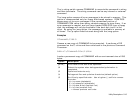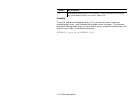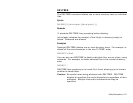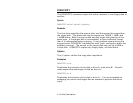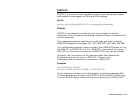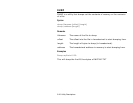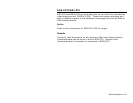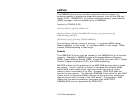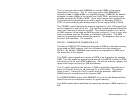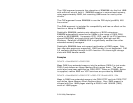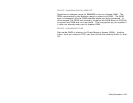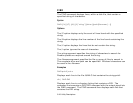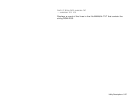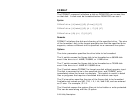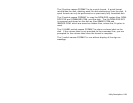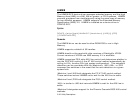Utility Descriptions 5-23
The
I=xxxx-yyyy
option tells EMM386 to include UMBs in the range
specified by
xxxx-yyyy.
The
X= xxxx-yyyy
option tells EMM386 to
exclude or not to make UMBs in a specified range. EMM386, by default,
attempts to make UMBs in the range from C800-F800, excluding areas
already occupied by ROM or RAM. Up to eight ranges can be specified.
The range can be specified as an exact range, for example, D000 to
DFFF or as the starting and ending marks for the range D000 to E000.
The
FRAME=
option defines the starting segment for four 16K pages that
can be mapped in and out at will. The optional
memK
argument specifies
how much memory to reserve for EMS. The default behavior is to allow
all XMS memory to be used as EMS but also to share it, if not in use, with
other processes such as Windows or Datalight’s WinLight. The EMS
memory is simulated using extended memory. The segment must be on
an even 16K boundary. For example,
DEVICE = EMM386.EXE FRAME=E000,512
The above CONFIG.SYS statement allocates 512KB of extended memory
to be used as EMS memory, with four Windows into that memory at
E000:0. By default, EMM386 uses memory as requested for EMS up to
the maximum in the system.
The
ROM=
option specifies a region of ROM to be supported by shadow
RAM. This can speed up system performance if the BIOS resides in ROM
and does not do its own ROM shadowing. As with all memory ranges, the
range must begin and end on 4KB boundaries.
The
D=
option specifies the amount of RAM in kilobytes (specified as a
base-10 number) that is to be reserved for a VDS buffer. The default
value is zero. Values for the D= option must be between 16KB and
256KB and are rounded up to the nearest 4KB.
The NOMOVEXBDA option tells EMM386 not to move the Extended Bios
Data Area from conventional memory to upper memory.
The
MAX=memk
option specifies the maximum amount of EMS memory in
KB.



